Martin-Logan CLS II and Stacked Quads
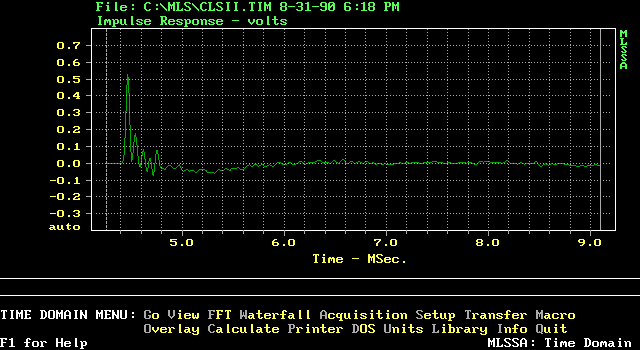
This is the Martin-Logan CLS II, measured in a Portland hi-fi shop. Unlike the Quad ESL57 (which is a three-way speaker), the CLS II is a crossoverless full-range speaker, so I was curious to see how it would do. I'm guessing rather than breakup - which certainly wasn't apparent on audition - the wrinkles in the first 300 microseconds (4 inches) are sum-and-difference cancellations due to non-coincident arrival from different parts of the curved diaphragm.
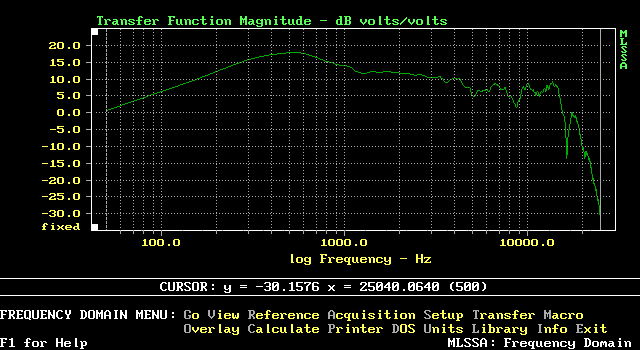
The wrinkles in the time domain (the real world, remember) are responsible for the roughness starting at 5 kHz and extending to 10 kHz - again, consistent with different arrival times from the curved diaphragm. The measurement shows a remarkable tilt of 10 dB from 600 Hz to 6 kHz, which you'd expect to have a pretty warm sound, but in real life, it doesn't sound that way. This might be a compensation for changing directivity in order to keep the system subjectively flat. As on the previous page, systems can have a different subjective balance than what the measurements indicate.
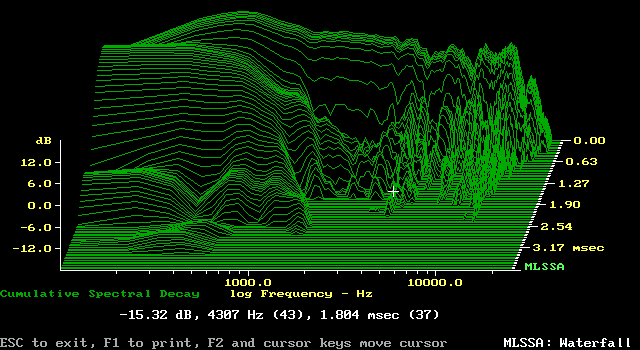
Here's the same quick settling to zero in the midrange as the Quad ESL57 - the hallmark of an electrostat. The multiple arrivals are probably responsible for the clutter from 4.3 kHz on up - although I admit they certainly could be resonances just as easily.

Here are the stacked Quads, as promised. These are probably the largest-radiator systems in the group, and for sure the most directional. It's difficult to find a sweet spot to measure, since they are directive both vertically and horizontally, and you can see evidence of cancellations in the time and frequency displays.
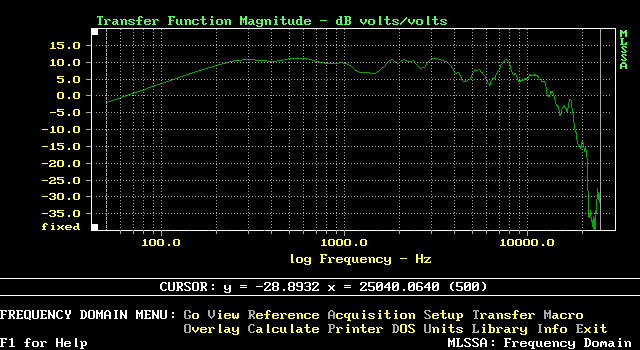
As expected, there's more bass compared to the single Quad, and there's some comb-filtering going on from 1 kHz and up. The ripples we see here are not the same as the diaphragm resonances in direct-radiators, or standing-waves in horns. The pattern we see here is more comparable to multiple small radiators in a line array, where there are multiple arrivals that produce comb-filtering visible in the frequency response.
This is a major problem for line arrays; unless the array is concave - and designed for a fixed distance - there will be blurring in the time domain and comb-filtering in the frequency domain. Curving the line array forces the listening position into one location, and makes time distortion even worse for any room reflections. Instead of curving the array, there are techniques to time-delay the inner elements of a flat array, synthesizing a virtual point source: this is used in phased-array radars and also in the Quad ESL63.
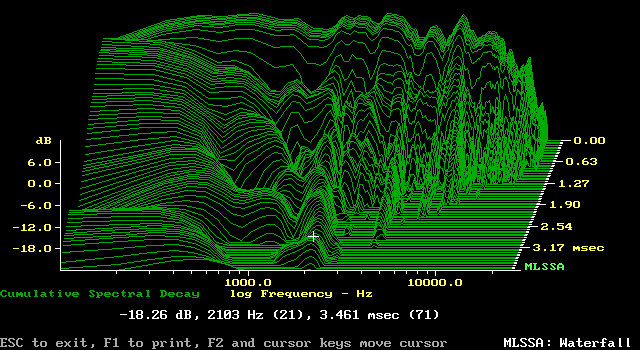
Which results in a more cluttered waterfall display as well - the midrange has more going on than the single Quad or the Martin-Logan CLS II.
MLSSA measurements are quite fast; even in a 486/33 PC, the complete measurement and calculation of the waterfall only takes a few seconds. When you're looking at a cluttered display like this, sweeping the microphone (at a constant distance) and making repeated measurements can tell you if the artifacts are highly directional or not. Artifacts that are only a few inches across are caused by interference patterns from multiple sources; when the artifact is physically larger, it's usually an indication of a driver or cabinet resonance.
Text and Pictures © Lynn Olson 2006.